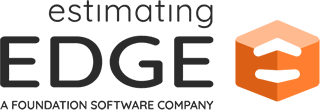 Estimating Edge’s team of experienced construction professionals and software engineers have developed the industry’s smartest takeoff and estimating software solutions for competitive estimates.
Estimating Edge’s team of experienced construction professionals and software engineers have developed the industry’s smartest takeoff and estimating software solutions for competitive estimates.
Don’t just estimate faster. Estimate better.®
- /
- /
- /
- /
Group Database | Customize Columns (v10)
Overview:
To customize your database columns, select Edit | Customize Columns. Doing so will open a Customize list of headings that you have not included.
Groups
Sequence – Several of the databases display and have assigned Sequence numbers to each line. When you add in new lines, each will be assigned a Sequence Number.
Group Code – An individual code created by the estimator to identify the group.
Description – A description of the Detail
Scan – Check the Scan box if you are creating a header such as a manufacturer’s name.
Added By – The name or initials of the individual adding the new lines to the database.
Date Added – Date new information was last edited.
Auto Pop – If checked the Condition properties screen for all of the conditions will automatically open one after another until they have all opened and been closed.
Group Conditions
Sequence – Several of the databases display and have assigned Sequence numbers to each line. When you add in new lines, each will be assigned a Sequence Number.
Description – A description of the Detail.
Detail – If a detail has been attached to this condition the detail number/code will appear here.
Added By – The name or initials of the individual adding the new lines to the database.
Date Added – Date new information was last edited.
Group Items
Sequence – Several of the databases display and have assigned Sequence numbers to each line. When you add in new lines, each will be assigned a Sequence Number.
Item – The item code for the item on the line.
Description – A description of the group item.
CQty – Tells the condition how to quantify the line item. Every item has a “C” (Condition) Quantity when it is inserted into a group, without a CQty a line item will never receive a quantity.
Quantity – The total amount or number of things measured or estimated.
Quantity From – Where the amount or number of things measured or estimated will get its “quantity” from, i.e. measuring, entering or someplace else.
User Code – A user code is how the program determines what general category heading an item gets listed under for reports. The EDGE uses a modified version of the CSI (Construction Specification Institute) Uniform System. The EDGE use the standardized 16 divisions. If you are a roofing contractor for example you will find that your user code goes from 07-100-000 to 07-999-9999. The same holds true For other users of The EDGE.
Waste % – An amount (percent) established and manually entered by an estimator to calculate the amount of waste to be added to a line in the estimate.
Account Code – An alpha or numeric code used by a company’s accounting department to identify items used in the business.
Alt CQty – An alternate method of telling a condition how to quantify a line in the estimate.
AU – Alternate units allows an estimator to create a second method of estimating the number of units of an item, it can be labor or material.
Date Added – Date new information was last edited.
On / Off – Line items will be always: ON” (i.e. will always be quantified and in every estimate) . OFF” (i.e. never be quantified and never in an estimate). Automatic” (i.e. if the item’s CQty receives a quantity the item will turn from off to on and be included in the estimate).
Ovr Account Number – Allows an estimator to override an item’s default account code.
Ovr Part Number – Allows an estimator to override an item’s default part number.
Ovr Phase Code – Allows an estimator to override an item’s default phase code.
Ovr Pricing Date – Allows an estimator to override an item’s pricing date.
Over UC – Allows an estimator to override an item’s default user code.
Ovr Waste- Allows an estimator to override an item’s waste percent.
Part Number – A manufacturer’s part number assigned to an item in the EDGE.
Phase Code – An alpha or numeric code for specific phases of work as determined by the contractor.
Pricing Date – The date prices were entered or updated.

